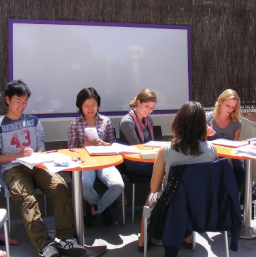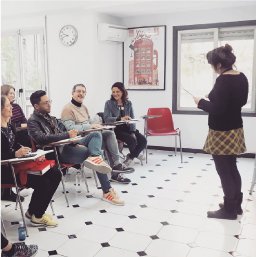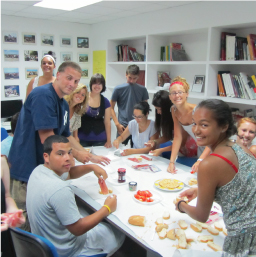Valencia
Spain
Valencia has accidentally found itself being the third most-populated city in Spain, after Madrid and Barcelona. However, it still retains the small-town vibe tourists seek and is definitely more laid back. Catalan/Valencian is a co-official language, although unlike Barcelona, here there is no controversy because most people solely speak Spanish.
Aside from the language, Valencia has a rich history. The city was founded by Romans and then switched hands several times, including a Moorish rule of over 500 years, being reconquered by El Cid, whose adventures would inspire the greatest Spanish epic poem Cantar de mío Cid. This medieval past contrasts sharply with modern Valencia, a metropolis surrounded by parks and beaches and whose latest architectural feature, the awe-inspiring City of Arts and Sciences designed by famed architect Santiago Calatrava, has given the city its ultimate modernist twist.
Finally, two things define the city and its heritage: the paella and the Falles celebration, a festival that includes parades and religious themes, but most importantly features the year-long building process of massive and intricately decorated effigies that are later burnt to the ground.
Why learn Spanish in Valencia?
Be inspired by walking around one of the largest old towns of Spain.
Immerse yourself in the futuristic architecture of the City of Arts and Sciences.
Take a short ferry to Ibiza and its legendary nightlife or join the crazy Tomatina festival in nearby Buñol.
Unlike other coastal cities, Valencia didn’t grow around its beaches, making them way less crowded and pristine.

Language Schools in Valencia:

Linguaschools Valencia is located next to universities and parks. The teachers are young, flexible, and experienced, and the school is highly regarded for its high quality/price ratio.

El Rincón del Tándem focuses on older students and a great number of extra activities. The school even offers non-traditional courses like photography to get the most of your time in Valencia.

AIP Language Institute, housed in a super modern building, emphasizes both free and extracurricular activities, and even has an in-house travel agency!
Travel
tips
When
Best time to go is mid-March through October.
FYI
In the 1950’s, Valencians diverted the river that divided the city in two and created a beautiful and leafy park in the riverbed, which is a great escape from the summer heat.
Meet
Every year, the Falles monuments employ thousands of people, and they are the pride and reflection of those who build them. The people who build the winners of each year’s competition end up being celebrities!
See
Valencia’s multicultural history has left the city dotted with fantastic examples of Islamic, Medieval and Baroque architecture, including a Cathedral with facades from each period.
The city’s location by the ocean makes it a paradise for sun-worshipers as most beaches are not as crowded as other coastal cities like Barcelona and Malaga.
The city’s latest landmark is the City of Arts and Sciences, a futuristic and monumental cultural complex smacked right in the middle of the city. It cannot -and should not- be missed.
Do
The Falles Festival between March 15th and 19th is THE event no one should miss.
La Tomatina, one of Spain’s most well-known festivals, takes place in Buñol (about 30 minutes away) every August and involves thousands of people throwing tomatoes at each other.
The celebrations for Holy Week take a whole new meaning in Valencia and it is often described as one of the most colorful in Spain, including brotherhoods not seen anywhere else.
Eat
Valencia has made of paella an art and it’s THE must-try dish. There are different versions depending on the ingredients.
Buy
As paella is the city’s most loved and well-known dish, a packaged kit of its ingredients is sold to bring Valencia’s most famed flavor anywhere.